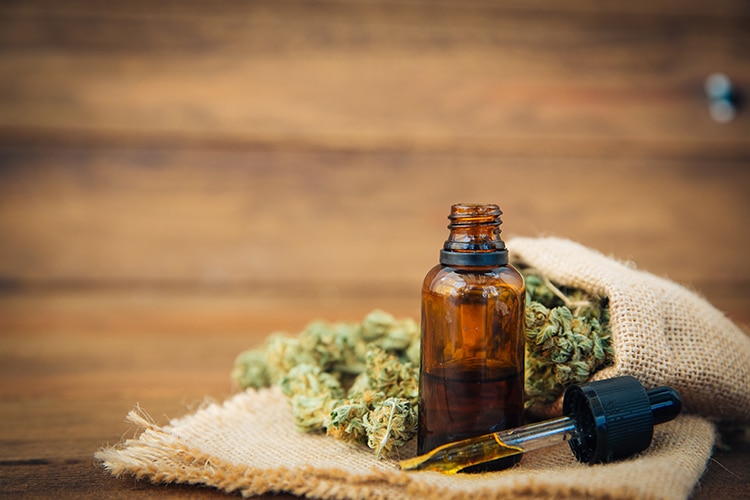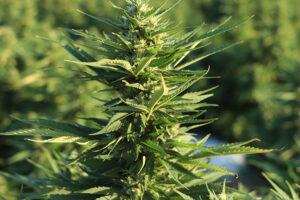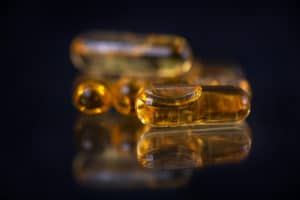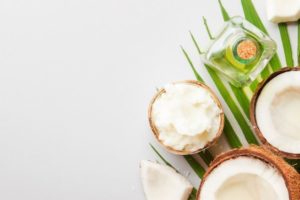The health and wellness industry is full of fads that seem to disappear from our radar as rapidly as it appeared. Understandably, people tend to be skeptical when a new “miracle supplement” or “herbal remedy” becomes popular. One particular natural remedy is breaking this trend and becoming mainstream, though, and it’s called CBD oil.
CBD oil is one of the most popular natural remedies currently available in the market. It seems that every week a news story or research study is highlighting the benefits or a new use for CBD oil. The pharmaceutical industry has taken notice, with drugs like Epidiolex receiving FDA approval for the treatment of epilepsy disorders.
In this guide, we will clarify questions around how to extract CBD oil and the benefits of using it in various applications. If you are interested in finding out more, read on!
What is it, and how is CBD Oil Made?
Cannabis plants contain 113 known cannabinoids.
Cannabidiol (CBD) is the most common cannabinoid found in cannabis plants at almost 40% of the total extract from the plant. Cannabidiol has been the focus of scientific research for the better part of the decade, with research studies on treatment for anxiety, cognition, movement disorders, and pain.
Cannabidiol, in contrast to THC, does NOT have the same psychoactive effects or produce a “high.” It is also much less stigmatized by society as its health benefits became apparent.
The body can receive cannabidiol through inhalation of smoke or vapor, oral spray, or ingestion.
One of the most popular forms of cannabidiol supply is CBD oil, for example. Both hemp and marijuana plants contain CBD, and the extraction of the CBD oil is possible from both plants. All CBD oils are not alike, though, varying significantly in the concentration of CBD, as well as the presence of other substances in the oil or method of extraction.
Hemp is the primary plant for extraction of CBD oil, due to its low THC content. It is also not a Schedule 1 controlled substance in the U.S., which makes it easier to market.
The Plant
The first step in the extraction process is the plant itself.
Whether you are using hemp or marijuana plants for CBD extraction, the quality of the plant is going to have a massive impact on the quality of extract. It is of crucial importance to use plants that have been grown organically (without the use of pesticides and other artificial fertilizers).
Hemp is currently the plant of choice, mostly due to the legal issues still connected with marijuana. Hemp is a non-controlled plant, as long as the THC content in the plants and its extracts are lower than 0.3%. Hemp products tend to sell better due to the legal status and safety for consumption by children, for example.
CBD products, like CBD oil, have become extremely popular. The number of hemp growers has been on the rise around the country, and there are surprisingly high-quality plants available for the extraction process.
The Process
If you’ve ever wondered how to make CBD oil, the process is not as straightforward as it seems.
The method and process used for CBD extraction have a direct effect on the quality, purity, and concentration of the CBD oil, so it is crucial to understand the extraction process thoroughly.
All extraction methods use a solvent, which is a substance that passes through the plant material to separate the active substances we seek from the bulk material in the plant.
The first step creates what is known as crude extract, a base byproduct used for further refinement. Once the solvent passes through plant material, cannabinoids and terpenes are extracted into an oil, and the process continues to the next step.
There are four extraction methods used today:
- Supercritical CO2 extraction
- Ethanol extraction
- Hydrocarbon extraction
- Lipid extraction
Each of the methods has its place, as well as advantages and disadvantages. There are different spectrums of CBD products, too. Often, the method of extraction will dictate the spectrum of the finished product.
Let’s explore each of the four extraction methods below:
Supercritical CO2 Extraction
Supercritical CO2 extraction is the method of choice when it comes to creating CBD-rich extracts.
- The solvent used in this process is CO2, which is kept under pressure and cooled to low temperatures until it becomes a liquid.
- Liquid CO2 then passes through the plant material to extract the active compounds.
The method is known for an extremely efficient extraction process, with up to 90% CBD concentration in the extracted oil.
Most of the CBD products and oils with high CBD concentration and purity come from supercritical CO2 extraction.
The downsides of the process include the high cost of the end products, the complexity of the extraction method, and the expense of the equipment used in the process. It is also a method that is non-DIY friendly for those who prefer to control the process themselves.
Ethanol Extraction
The second method is ethanol extraction. Compared to CO2 extraction, ethanol extraction is a low-cost method of extracting CBD from both the hemp and marijuana plants.
It does not mean that CBD oil produced using ethanol extraction is low-quality, though. Rather, it needs additional processing and expertise to achieve the same purity.
Ethanol extraction has been the method of choice for extracting oil from plants ever since modern science came into the forefront, so it has a lot of history behind it.
The issue with the method is the ethanol itself. It is a polar solvent, so it mixes with water and can often dissolve other molecules outside of CBD. It creates an oil extract that contains other ingredients, such as chlorophyll, which does not add value to the final product.
The extracted oil does not have the same clarity or purity as produced during the CO2 process. It is often much darker and tastes more bitter than comparable products.
Achieving a higher purity of CBD oil requires post-extraction filtering. The process often downgrades the quality of the CBD oil if the operators have little experience or inferior equipment.
On average, ethanol extraction will fail to match the quality and purity of the CO2 extraction process, but it should be sufficient for the needs of most CBD oil products on the market.
Hydrocarbon Extraction
Hydrocarbon extraction was one of the earliest methods for CBD extraction, but it has lost most of its foothold in the commercial CBD extraction of the modern industry.
The method utilizes butane, propane, hexane, isopropyl alcohol, and acetone as solvents. Due to the low boiling points of these solvents, CBD extraction is quick and easy. It is also troublesome.
The concentration of extracted CBD in oil tends to be low, and the process fails to remove THC from the extract effectively. The purity of CBD oil is questionable, with potential implications for the immune system of the end-user and other unknown factors.
The safety of the product can be easily compromised, and most of the commercial CBD extraction operations will choose a purer method, such as CO2 and ethanol extraction.
The method remains popular in the DIY community due to its simplicity, low cost, and ease of use.
The end products are nowhere near the quality of most commercial ones, though.
Lipid Extraction
The final method that is popular in the DIY community is lipid extraction.
The method utilizes fats or lipids to extract the cannabinoid compounds from the plant. While the method is quite straightforward and can be done at home safely, the end-products tend to vary drastically in quality and consistency.
Most commercial CBD operations do not consider lipid extraction a viable method.
Yet, there is a segment of boutique CBD product companies that use it with a focus on homemade, DIY, all-natural approach as the selling point.
Winterization
Once the crude extract separation from the plant is complete, it is necessary to refine and purify the extract until it is suitable for end-users. We refer to this refinement process as winterization.
Winterization further eliminates the unwanted substances from the extract and creates a purer end-product.
- It starts by mixing the crude extract with 200-proof alcohol.
- Once the mixture is complete, it is frozen overnight. The mixture will change its look and opacity in the morning, with a blurred or foggy aesthetic.
- It then passes through a filter to separate the liquid from the other compounds.
The alcohol is still present in the liquid but will evaporate by heating the liquid, leaving a pure extract.
Decarboxylation
Cannabinoids in plants are naturally acidic. The same is true for CBD, which appears in the form of CBDA (cannabidiolic acid).
Extraction methods that use low-temperature processes, like CO2 extraction or some forms of ethanol extraction, transfer “raw” acid cannabinoids into the extract, which are unfit for end-use.
The “raw” cannabinoids need activation to produce the desired molecules in the oil extract.
Activation is achievable through a process called decarboxylation, which is the process of heating the extract to remove the “raw” acid cannabinoids and release the active CBD molecules into the extract.
The process is critical since studies have shown that CBD and CBDA have different effects on the end-user.
Short Path Distillation and Chromatography
Further isolating individual compounds from the CBD oil extract turns to short path distillation and chromatography as commonly used methods.
Short path distillation is similar to decarboxylation. It uses heating to separate the individual compounds from the CBD oil extract. All individual compounds have different boiling points, and through evaporation, a single compound can remain.
Chromatography is a process of filtration and separation in liquids. It is where the mixing of the stationary phase and mobile phase liquids with the CBD oil extract happens. The stationary phase liquids separate individual compounds from the CBD oil mix.
Both processes are extremely effective in producing CBD isolate products.
Isolate CBD oil has high purity, but it has a much narrower spectrum, often missing other compounds that are needed to achieve The Entourage Effect (a name for the combined effects of CBD and other compounds from hemp and marijuana plants).
Benefits and Uses of CBD Oil
There are many important benefits and uses of CBD oil.
CBD oil enjoys its current popularity due to excellent feedback from the end-users, and these are the most common benefits and uses for CBD oil:
- Pain management– Living with pain is challenging, and the recent opioid addiction crisis in America demonstrated the dangers of relying on mainstream pain medication. CBD oils have found a use in the pain relief arena with a variety of helpful applications, from cancer patients to chronic muscle and bone injuries. CBD oil offers effective pain relief without the pitfalls of addiction.
- Alleviation of anxiety and depression– Several studies have shown promise on CBD use in treating anxiety and depression. These treatments often include medication with plenty of side effects, but CBD oil comes with almost no side effects, and it is a much gentler therapy.
- Neuroprotective properties– Perhaps the biggest breakthrough in CBD research is here. Plenty of studies have shown encouraging signs of CBD oils treatment of epilepsy. Even mainstream pharmaceutical companies have drugs in the pipeline that utilize CBD, similar to recently FDA-approved Epidiolex. Similar results also exist in Parkinson’s research trials.
- Diabetes prevention– Diabetes is a disease that has devastated the population in the U.S. The use of CBD oil has also shown a reduction in overall inflammation and diabetes occurrence in the test subjects.
If you would like to know more about CBD oil benefits and uses, feel free to check out our Education section, which has plenty of articles on the topic.
Conclusion
CBD oil is here to stay. Its benefits and potential uses seem limitless, and the boom is far from over.
Companies are investing time and resources into new methods and techniques for creating CBD products of higher quality and purity.
We hope that this guide has been a help in evaluating your next choice of CBD products on the market. It will help you comb through the clutter of “miracle oils” and find the highest quality products that are most suitable for your needs.
FAQs About How to Make CBD Oil
Question: How to make CBD oil?
Answer: There is a lot in the process in creating CBD oil but in short summary, it is choosing the plant and finding the extraction method that suits you.
Question: Where does CBD oil come from?
Answer: Both hemp and marijuana plants contain CBD, and the extraction of the CBD oil is possible from both plants.
Question: Does the quality of the plant affect the quality of CBD oil?
Answer: Yes. The quality of the plant is going to have a massive impact on the quality of extract. It is of crucial importance to use plants that have been grown organically (without the use of pesticides and other artificial fertilizers).
Question: What are the methods of extracting CBD oil?
Answer: The four of the most common methods in extracting CBD oil are Supercritical CO2 extraction, Ethanol extraction, Hydrocarbon extraction, and lipid extraction.
Question: Can you extract CBD oil at home?
Answer: Yes, you can extract CBD oil using lipid extraction. The method utilizes fats or lipids to extract the cannabinoid compounds from the plant. While the method is quite straightforward and can be done at home safely, the end-products tend to vary drastically in quality and consistency.
Question: What is the best method of extracting CBD oil?
Answer: Supercritical CO2 extraction is the method of choice when it comes to creating CBD-rich extracts. The method is known for an extremely efficient extraction process, with up to 90% CBD concentration in the extracted oil.
Question: Is CBD oil acidic?
Answer: Cannabinoids in plants are naturally acidic. The same is true for CBD, which appears in the form of CBDA (cannabidiolic acid).
Question: What are the benefits of using CBD oil?
Answer: The most common benefits of CBD oil include pain management, alleviation of anxiety and depression, neuroprotective properties, and diabetes protection.






